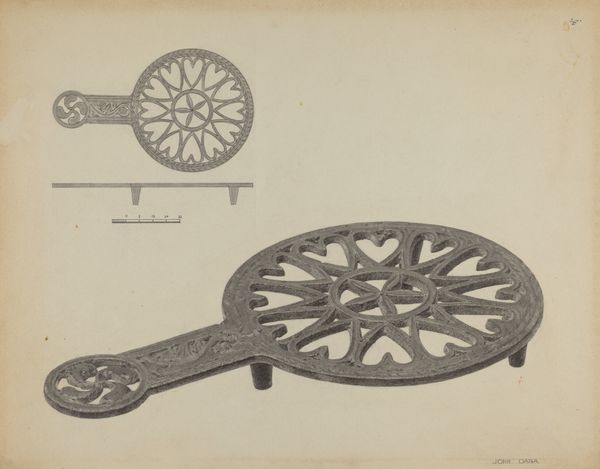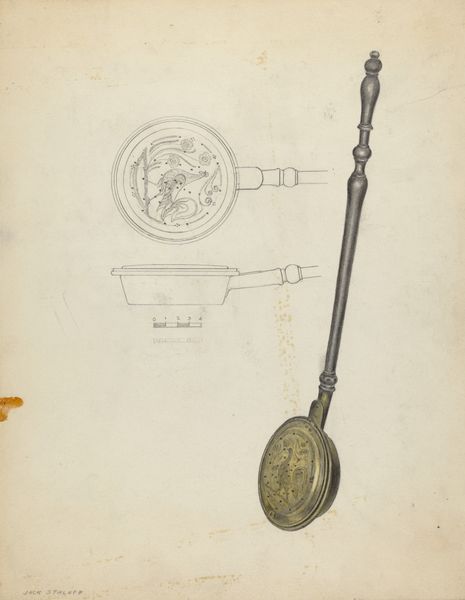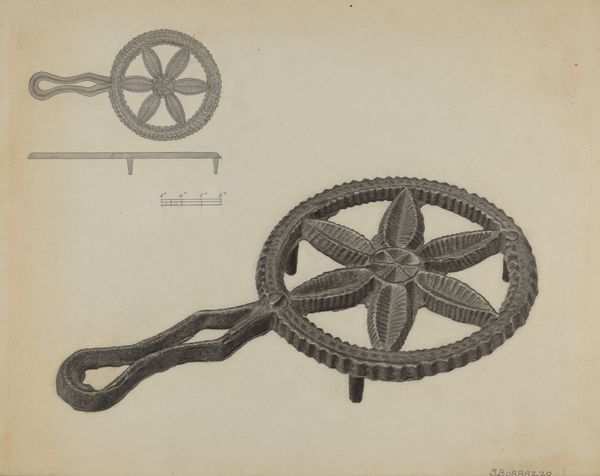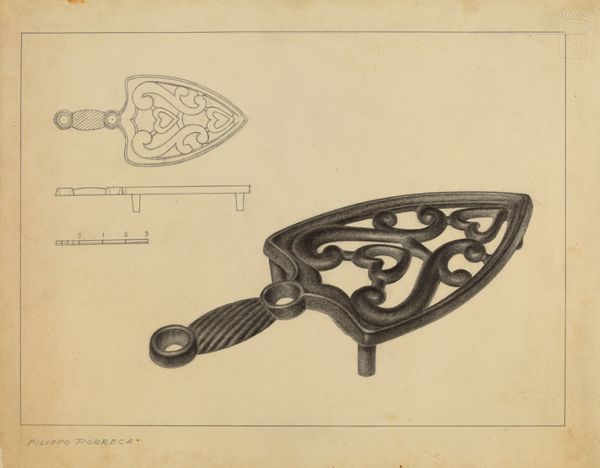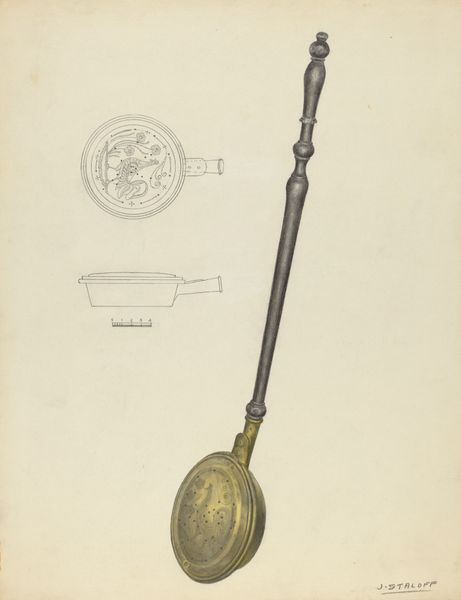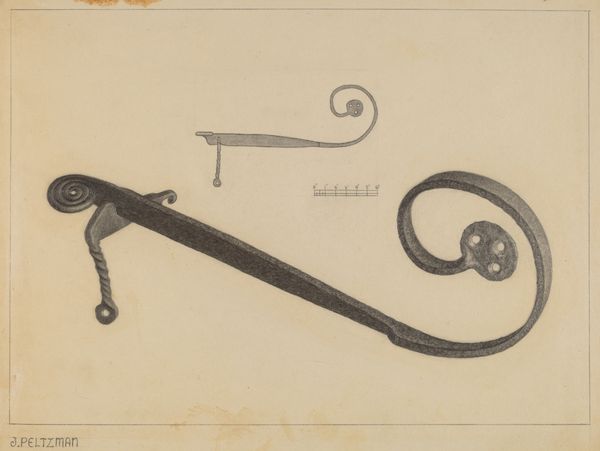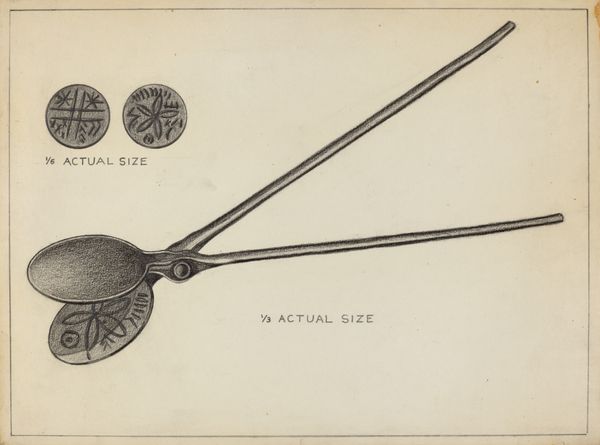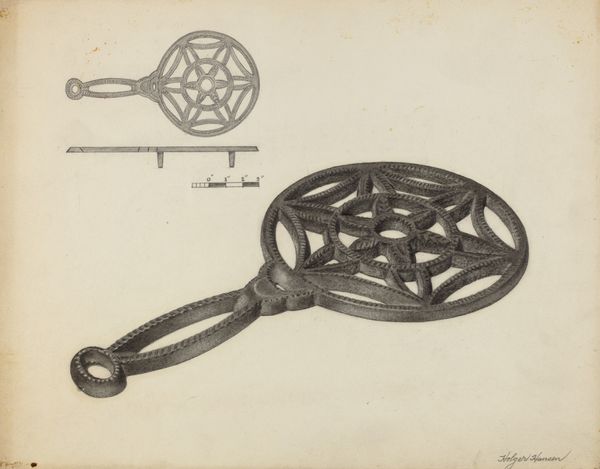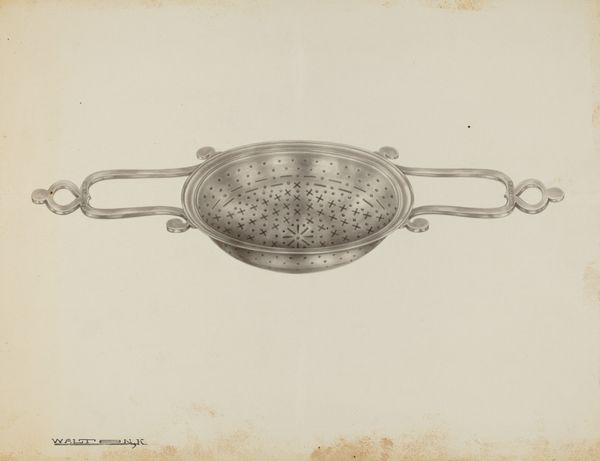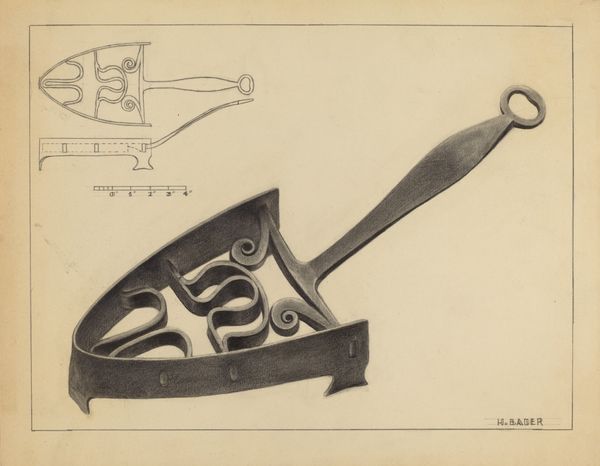
drawing, pencil, graphite
#
drawing
#
pencil
#
graphite
#
academic-art
Dimensions: overall: 22.9 x 29 cm (9 x 11 7/16 in.) Original IAD Object: 6 1/2" in diameter; handle: 29" long
Copyright: National Gallery of Art: CC0 1.0
Editor: This is Bernard Westmacott's graphite drawing, "Wafer Iron," created around 1937. It's quite detailed, almost like a technical drawing, but the wafer iron itself looks surprisingly decorative. What do you see in this piece, beyond the literal depiction of a kitchen tool? Curator: I'm immediately struck by the almost ritualistic presentation of a commonplace object. The symmetry, the precise rendering, the display of both sides of the iron – it elevates the humble tool. This is not merely about baking wafers; it's about cultural memory. These circular patterned forms have been used in funerary or Eucharistic rituals to signify purity and ascension across varied cultures and over millennia. Editor: That’s interesting. So you think the artist might be drawing a parallel between the everyday act of baking and something more sacred? Curator: Absolutely. Consider the choice of graphite, allowing for subtle gradations of light and shadow, lending the object a near-monumental quality. What happens when we treat ordinary tools and forms, those domestic spheres, as emblems of significance? Baking itself involves ritual. The repeating pattern burned into the wafer recalls ideas of family, tradition, the comforts of home, perhaps…even longing for times past. Editor: So the pattern imprinted becomes an echo of deeper, shared cultural experiences? Curator: Precisely! These repeated forms on the iron invoke deeper memory traces, touching upon symbols from spirituality to family meals. The object itself, mundane as it may be, is charged with layers of cultural and emotional significance. Westmacott encourages us to decode them. Editor: That reframes it completely. It's not just a wafer iron anymore; it's a vessel of history. I'll never look at baking the same way again. Curator: And perhaps, by considering the symbolic weight of the everyday, we can better understand the stories objects tell and the beliefs and meanings that can endure.
Comments
No comments
Be the first to comment and join the conversation on the ultimate creative platform.

